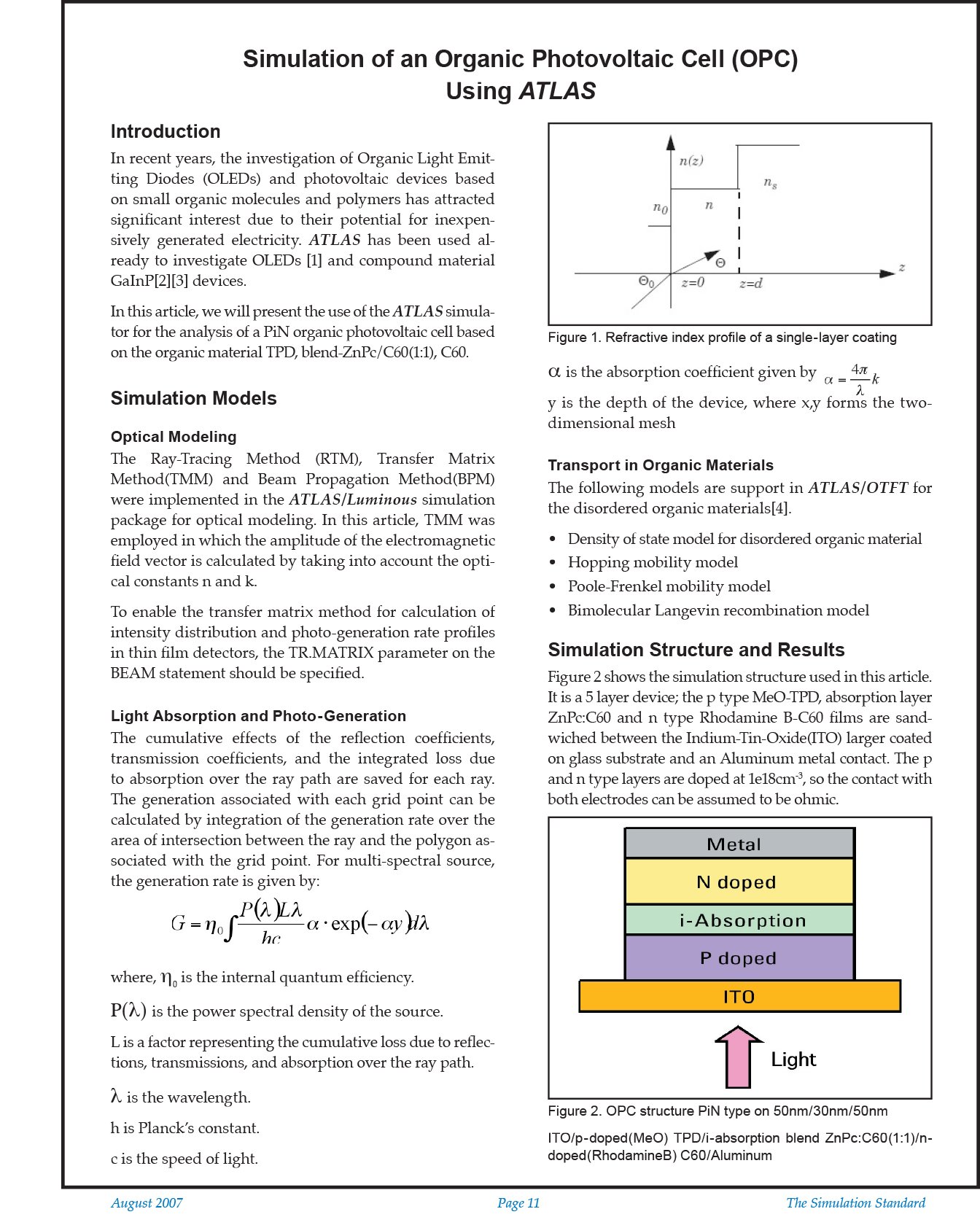Simulation of an Organic Photovoltaic Cell (OPC) Using Atlas
Introduction
In recent years, the investigation of Organic Light Emitting Diodes (OLEDs) and photovoltaic devices based on small organic molecules and polymers has attracted significant interest due to their potential for inexpensively generated electricity. ATLAS has been used already to investigate OLEDs [1] and compound material GaInP[2][3] devices.
In this article, we will present the use of the ATLAS simulator for the analysis of a PiN organic photovoltaic cell based on the organic material TPD, blend-ZnPc/C60(1:1), C60.
Simulation Models
Optical Modeling
The Ray-Tracing Method (RTM), Transfer Matrix Method(TMM) and Beam Propagation Method(BPM) were implemented in the ATLAS/Luminous simulation package for optical modeling. In this article, TMM was employed in which the amplitude of the electromagnetic field vector is calculated by taking into account the optical constants n and k.
To enable the transfer matrix method for calculation of intensity distribution and photo-generation rate profiles in thin film detectors, the TR.MATRIX parameter on the BEAM statement should be specified.
Light Absorption and Photo-Generation
The cumulative effects of the reflection coefficients, transmission coefficients, and the integrated loss due to absorption over the ray path are saved for each ray. The generation associated with each grid point can be calculated by integration of the generation rate over the area of intersection between the ray and the polygon associated with the grid point. For multi-spectral source, the generation rate is given by:



